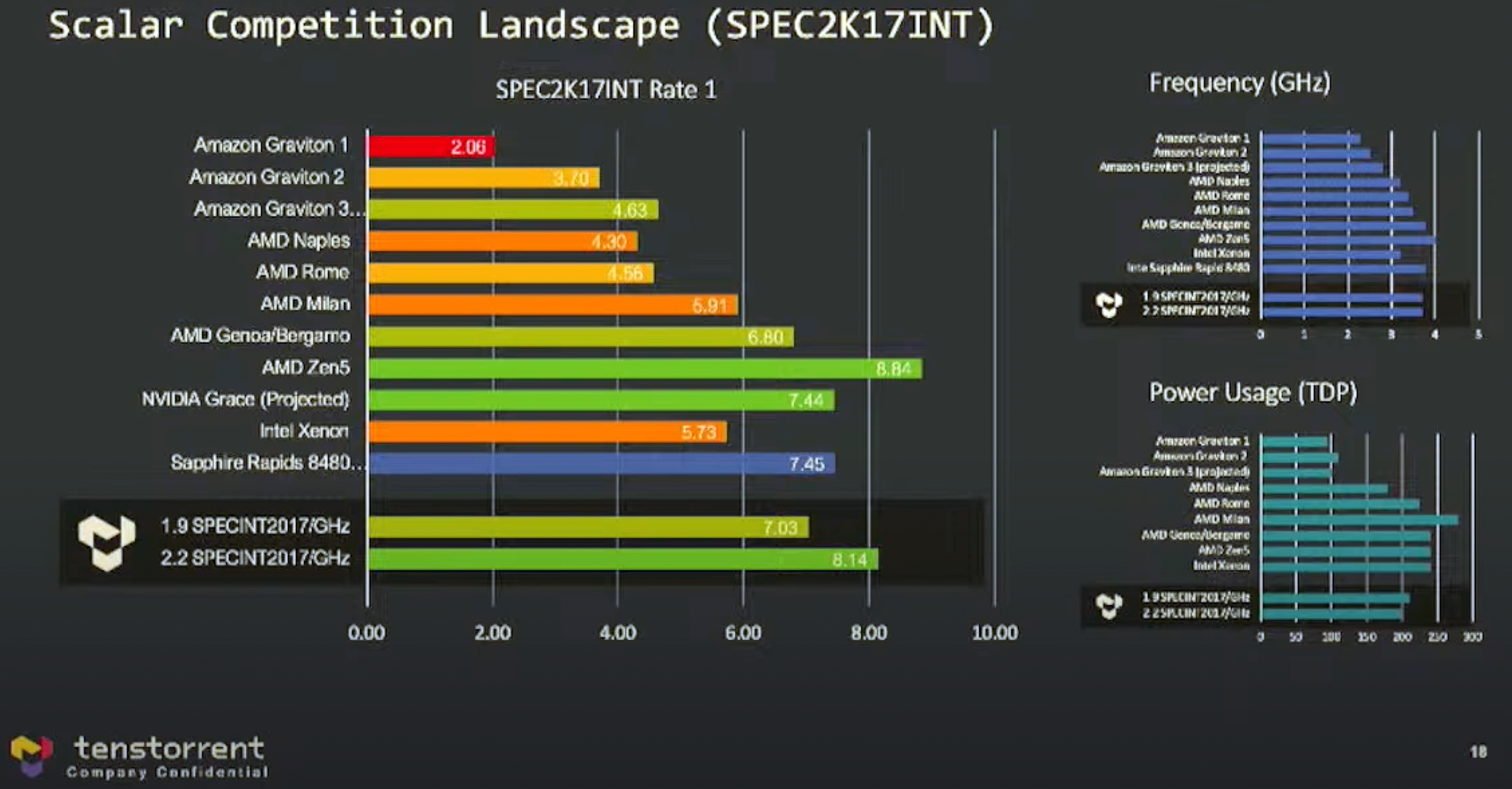
Jim Keller, chief executive officer of Tenstorrent, shared the company's performance forecasts for CPUs based on its own Ascalon processor core compared to competitors, including AMD's Zen 5, Amazon's Graviton 3, and Nvidia's Grace. Tenstorrent's Ascalon is projected to provide market-leading integer performance-per-watt, but what attracted a lot of attention is that Tenstorrent expects AMD's Zen 5 to be the performance champion in raw integer throughput. In fact, Keller predicts that AMD's Zen 5 will be 30% faster than the current-gen Zen 4 in integer workloads.
Jim Keller shared the company's performance projections for Tenstorrent's in-house-designed 8-wide out-of-order execution Ascalon RISC-V core against potential competitors in the SPEC CPU 2017 INT Rate benchmark that measures integer performance. The company expects its Ascalon 1.9 SPEC2K17INT/GHz to hit 7.03 points and its Ascalon 2.2 SPEC2K17INT/GHz to hit 8.14 points.
Tenstorrent's performance expectations for its own CPUs were revealed at the Nerds Talking to Nerds About RISC-V event in India, as you can see in the slide below.

The predictions put Tenstorrent's upcoming CPU core comfortably ahead of Intel's Sapphire Rapids (7.45 points), Nvidia's Grace (7.44 points), and AMD's Zen 4 (6.80 points). Yet, AMD's Zen 5 is projected to hit 8.84 points, making it the absolute integer performance champion in 2024 – 2025.
There is a major catch with Tenstorrent's performance expectations: they are all projections and not real or even simulated benchmarks, Tenstorrent told Tom's Hardware. So while we can expect engineers from Tenstorrent to accurately model the performance of their own CPU design and try to predict what AMD could offer next, these are still projections, not actual benchmark results.
For obvious reasons, AMD's Zen 5 performance number has attracted the most attention, even though it is highly unlikely that this projection is completely accurate. But what is perhaps more important is that Tenstorrent expects AMD's Zen 5 to run north of 4.0 GHz and have a TDP south of 250W, as opposed to Ascalon running at around 3.80 GHz at a TDP of approximately 200W.
If power consumption is taken into account, it looks like processors based on Tenstorrent's Ascalon microarchitecture (such as the company's own Aegis chiplet) will indeed offer leading integer performance-per-watt, which is particularly important for the types of applications the processor is designed to satisfy.







